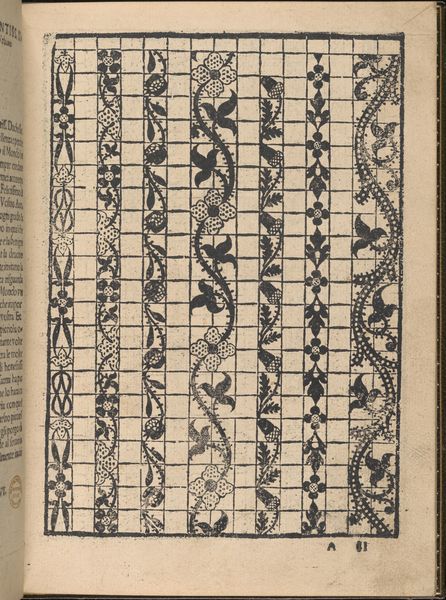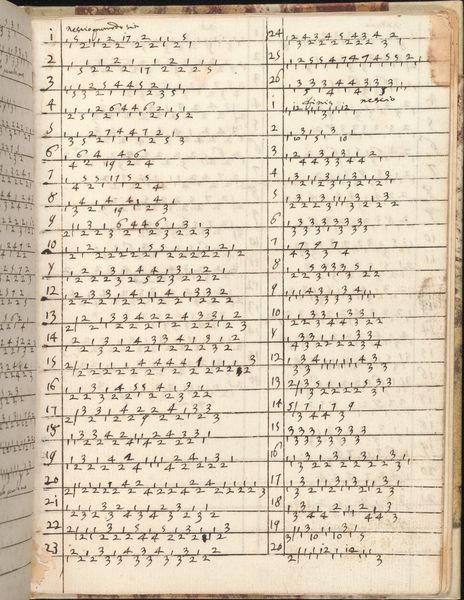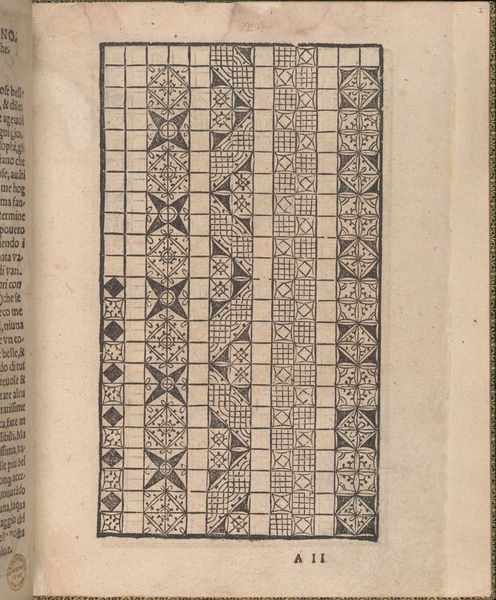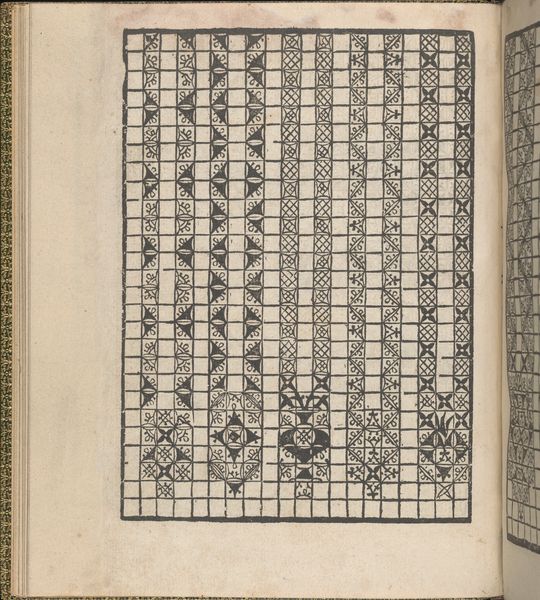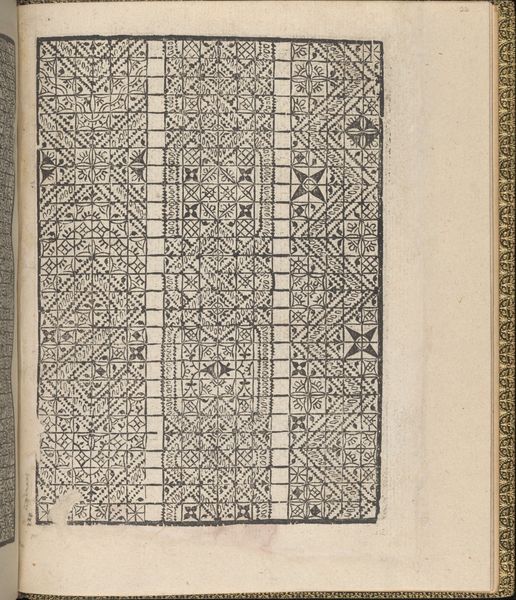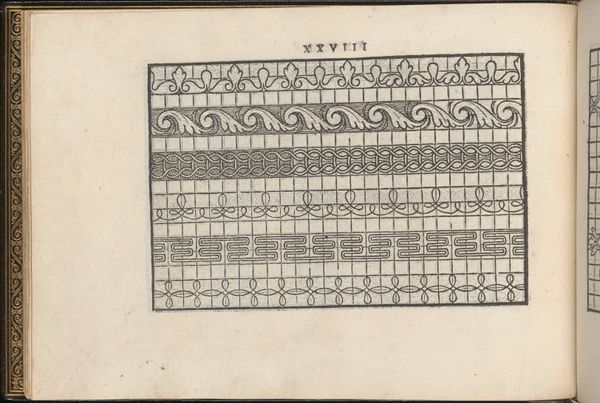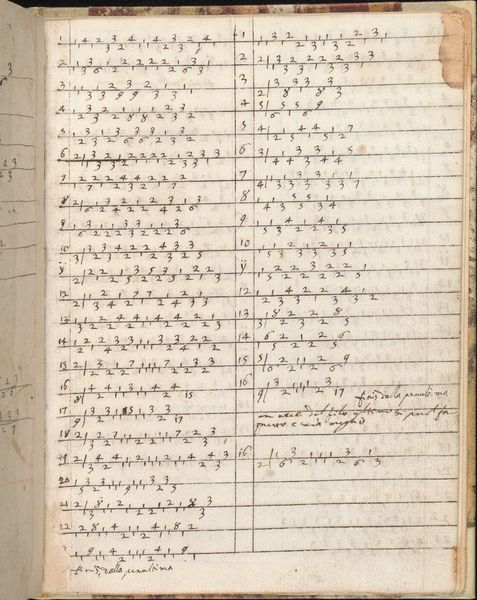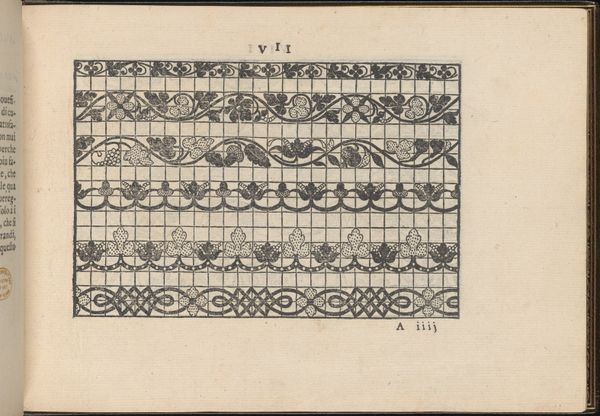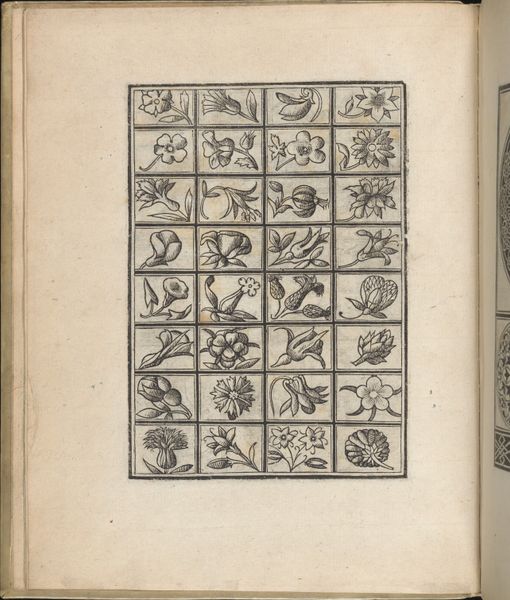
Giardineto novo di punti tagliati et gropposi per exercitio & ornamento delle donne (Venice 1554), page 2 (recto) 1554
0:00
0:00
drawing, print, engraving
#
drawing
# print
#
11_renaissance
#
geometric
#
line
#
italian-renaissance
#
engraving
Dimensions: 7-5/8 x 6-3/8 x 1/4 in. (19.4 x 16.2 x 0.6 cm)
Copyright: Public Domain
This page, printed in Venice in 1554 by Matteo Pagano, is made from paper, ink and a woodblock. Look closely, and you can see how the graphic grid and patterns were achieved through the process of relief printing, where ink sits on the raised areas of the woodblock. The materiality of the print is all about making visible the invisible. It is a pattern book for lacemaking, an important cottage industry in Renaissance Europe. This page served as a template for women's needlework, connecting domestic life with the burgeoning market economy. The application of ink to paper allowed the dissemination of the designs, so others could replicate the patterns with thread. The grid structure imposed on the page allowed for endless variations. Think of it as an early form of digital code. And consider the labor behind the book and lacework, which often goes unnoticed. The print’s graphic simplicity belies the complex social dynamics it represents, blurring the lines between craft, commerce, and artistry.
Comments
No comments
Be the first to comment and join the conversation on the ultimate creative platform.


